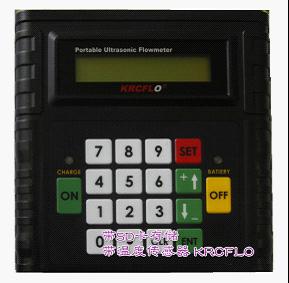First, for portable flow meters, there is currently only one type of clamped ultrasonic. Hand-held time difference ultrasonic liquid flowmeters are an excellent tool for engineers and technicians who want to know the liquid flow in a pipe without cutting the pipe or without stopping the work, in the case of difficult operation or high operation. The user only needs to put a lightweight flow meter on the body without worrying about overloading!
EHAs eliminate the need for separate hydraulic pumps and tubing, simplifying system architectures and improving safety and reliability. This technology originally was developed for the aerospace industry but has since expanded into many other industries where hydraulic power is commonly used.
The primary development that lead to the possibility of EHAs was the precision feedback controlled conventional motor, or high-power stepper motor[citation needed].[3] Stepper motors are designed to move a fixed angle with every application of energy, and do so repeatedly in an extremely precise fashion. Both types of motor drives have been in use for years, powering the controls on motion control rigs and numeric control machine tools for instance.
With an EHA, high-power versions of these motors are used to drive a reversible pump, which is tied to a Hydraulic Cylinder. The pump pressurizes a working fluid, typically hydraulic oil, directly raising the pressure in the cylinder, and causing it to move. The entire system, consisting of the pump, the cylinder and a reservoir of hydraulic fluid, is packaged into a single self-contained unit.
Instead of the energy needed to move the controls being supplied by an external hydraulic supply, it is supplied over normal electrical wiring, albeit larger wiring than what would be found in a fly-by-wire system. The speed of the motion is controlled through the use of pulse-code modulation. The result is a "power-by-wire" system, where both the control and energy are sent through a single set of wires.[4]
Redundancy can thus be provided by using two such units per surface, and two sets of electrical wires. This is far simpler than the corresponding systems using an external hydraulic supply. Additionally, the EHA has the advantage that it only draws power when it is being moved, the pressure is maintained internally when the motor stops. This can reduce power use on the aircraft by eliminating the constant draw of the hydraulic pumps. EHAs also reduce weight, allow better streamlining due to reduced internal routing of piping, and lower overall weight of the control system.[5]
EHAs, EHA, Electro-Hydrostatic actuators for any integrated hydraulic control system GRH , https://www.grhcn.net
User interface is flexible and easy to use; applicable to various sizes of liquid flow metering; non-contact measurement method, small size, easy to carry; built-in charging circuit, rechargeable battery working time more than 18 hours; 4 lines of Chinese characters with the screen display instantaneous flow, Flow rate, cumulative flow, signal status, etc.; built-in data logger, recordable date, accumulated flow, signal status, working time, etc.; standard data interface RS232 for online detection or export record data; OCT output positive, negative, static cumulative pulse Signal and original frequency signal (1-9999KHZ).
Not only can you perform satisfactory measurements within minutes, but you can also save the data you need in a recorder for easier printing or downloading.
Second, the technical requirements for ultrasonic flowmeter sensors are also different, because the sensor technology will affect the accuracy of this flowmeter to measure the flow.
Currently used material:
1. Cap: 304 stainless steel 2. Body flame retardant nylon 66+ glass fiber deformation temperature 180°C melting point 255°C
So that anti-weathering ability and high temperature resistance, not easy to deformation, increase the service life!
Third, with the changes in the market, technology has also been reformed, and the updated technology is as follows:
1. Unique dual CPU parallel working mode; DSP digital signal processing technology; Analog data output digital processing 2. Balanced noise suppression receiving circuit 3. LC oscillation circuit/capacitance parameter random self-detection 4. Advanced SMD chip assembly line production 5 Fixture card slot; Sensor end fixed magnetic block 6. Data flow collection system The above is just for the overview of hand-held ultrasonic flow meter, specific information and parameters, welcome friends from all walks of life to exchange and discuss!